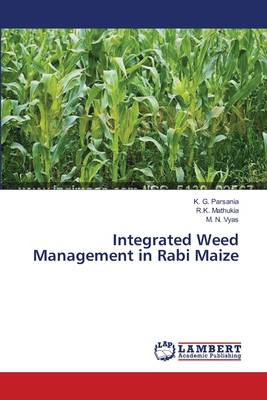
- Afhalen na 1 uur in een winkel met voorraad
- Gratis thuislevering in België vanaf € 30
- Ruim aanbod met 7 miljoen producten
- Afhalen na 1 uur in een winkel met voorraad
- Gratis thuislevering in België vanaf € 30
- Ruim aanbod met 7 miljoen producten
Zoeken
Integrated Weed Management in Rabi Maize
K. G. Parsania, R. K. Mathukia, M. N. Vyas
Paperback | Engels
€ 67,45
+ 134 punten
Omschrijving
Among all the cereals, productivity of maize is highest accounts 18 per cent acreage and 25 per cent production in the world. Maize occupies an area of 66 lakh hectares producing about 133 lakh tonnes annually with the productivity of 2015 kg ha-1 in India. In agriculture, weeds cause more damage (45%) as compared to insects, pests and diseases but due to hidden loss by weeds in crop production, it has not drawn much attention of agriculturists. Weed problem is one of the major barriers responsible for low productivity of maize because weeds compete with the crop for moisture, nutrients, space and light. Moreover, they increase production cost, harbour insects-pests and plant diseases, decreases quality of farm produce and reduce the value of the land. Weed control through use of herbicides assumes a greater significance due to accessibility and selective and quick action. Herbicides use in cropland provides weed free condition from very beginning, increases crop yield, improves crop quality and reduces production cost.
Specificaties
Betrokkenen
- Auteur(s):
- Uitgeverij:
Inhoud
- Aantal bladzijden:
- 116
- Taal:
- Engels
Eigenschappen
- Productcode (EAN):
- 9783659552007
- Verschijningsdatum:
- 6/06/2014
- Uitvoering:
- Paperback
- Afmetingen:
- 150 mm x 220 mm
- Gewicht:
- 181 g

Alleen bij Standaard Boekhandel
+ 134 punten op je klantenkaart van Standaard Boekhandel
Beoordelingen
We publiceren alleen reviews die voldoen aan de voorwaarden voor reviews. Bekijk onze voorwaarden voor reviews.








